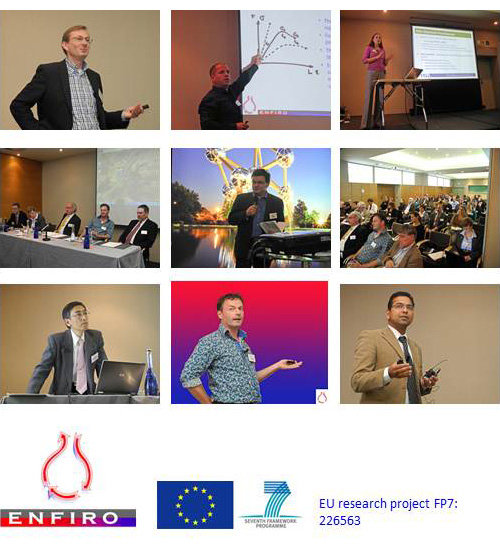ENFIRO identifies halogen free flame retardants with a good environmental and health profile
The EU-funded collaborative research project ENFIRO (www.enfiro.eu) concluded with a workshop in Brussels. About 90 participants received an overview of the results of the project as well as some insight into related research activities from scientists outside the consortium. The project started out from the assumption that not enough environmental and health data were known of alternatives to the established brominated flame retardants. In order to make the evaluation fully comprehensive, it was decided compare also material and fire performance as well as attempt a life cycle assessment of a reference product containing halogen free versus brominated flame retardants. About a dozen halogen free flame retardants were studied representing a large variety of applications, from engineering plastics, printed circuit boards, encapsulants to textile and intumescent coatings. A large group of the studied flame retardants were found to have a good environmental and health profile: ammonium polyphosphate (APP), aluminium diethylphosphinate (Alpi), aluminium hydroxide (ATH), magnesium hydroxide (MDH), melamine polyphosphate (MPP), dihydrooxaphosphaphenanthrene (DOPO), zinc stannate (ZS)[1] and zinc hydroxstannate (ZHS). Overall, they were found to have a much lower tendency to bioaccumulate in fatty tissue than the studied brominated flame retardants.
The tests on the fire behaviour of materials with different flame retardants revealed that halogen free flame retardants produce less smoke and toxic fire emissions, with the exception of the aryl phosphates RDP and BDP in styrenic polymers. The leaching experiments showed that the nature of the polymer is a dominating factor and that the leaching behaviour of halogen free and brominated flame retardants is comparable. The more porous or "hydrophilic" a polymers is the more flame retardants can be released. However, moulded plates which represent real world plastic products showed much lower leaching levels than extruded polymer granules. The impact assessment studies reconfirmed that the improper waste and recycling treatment of electronic products with brominated flame retardants can produce dioxins which is not the case with halogen free alternatives.
A highlight was certainly the ENFIRO Film, a 20 minute documentary prepared by the project partner Callisto. It starts with an introduction to the background leading to the ENFIRO project, namely the story of findings and assessments of brominated flame retardants in the environment. Then the project results are presented by the researchers with strong visual impressions from their experimental work. A teaser of the film is available on the ENFIRO website, and the full film will be made available on the web within the coming months.
More info www.enfiro.eu
[1] ZS and ZHS showed some neurotox-effects in in-vitro tests (tests with cells or cell cultures but not whole animals), which were not confirmed in ex-vivo tests (with organs from animals) and therefore are of limited relevance.
Below: Impressions from the ENFIRO Workshop (from top left): The project coordinator Pim Leonards, Jonas Aspling from Swerea, Emma Lavoie from the US-EPA, the panel discussion with Adrian Beard, Cynthia DeWit, Jürgen Troitzsch, Niels Jonkers and Dag Andersson, Stefan Posner from Swerea, an attentive crowd, Shigeki Masunaga from Yokohama National University, Niels Jonkers from IVAM (in an artistic rendering) and Sabyasachi Gaan from EMPA CH.
